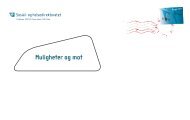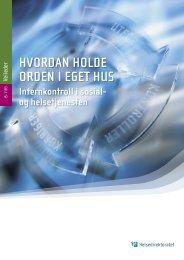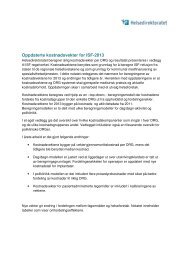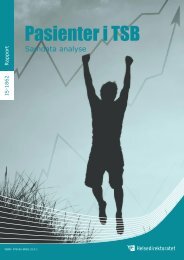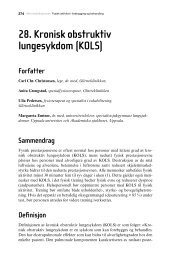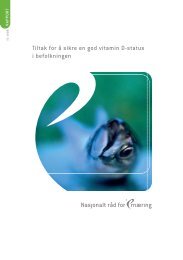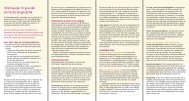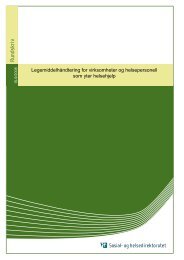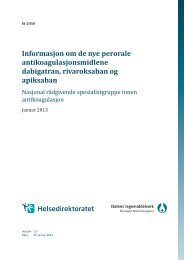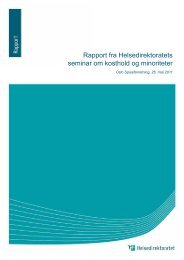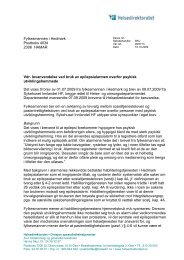Last ned - Helsedirektoratet
Last ned - Helsedirektoratet
Last ned - Helsedirektoratet
Create successful ePaper yourself
Turn your PDF publications into a flip-book with our unique Google optimized e-Paper software.
who have a low average alcohol consumption during pregnancy but drink six or more<br />
glasses on some occasions (binge drinking).<br />
The preceding paragraphs concern the type of effects that may occur at the specified<br />
levels of alcohol use. There are clear indications that the risks are raised substantially at<br />
low levels of alcohol consumption. The effects are difficult to quantify since the results<br />
of the available studies differ somewhat on this point. It is clear, however, that the<br />
severity of the effects increase with the individual’s average alcohol consumption and<br />
the number of glasses consumed on each occasion.<br />
The Committee concludes that every reduction in alcohol consumption leads to a<br />
reduction in risks. It is not possible to determine a lower limit for alcohol consumption<br />
from which it can be stated with certainty that there would be no effect on the foetus<br />
and the pregnancy.<br />
Effects of alcohol use during breastfeeding<br />
Alcohol use during breastfeeding also has adverse effects on the child. Babies have<br />
been found to drink less milk and to have a disturbed sleep-wake pattern for three<br />
hours after nursing mothers have consumed between one and two standard drinks. The<br />
effects of lower consumption levels have not been studied.<br />
The conclusion is that it is not possible to indicate a safe lower limit for alcohol<br />
consumption during breastfeeding.<br />
Health education<br />
Scientific studies show that various problems may occur in health education about<br />
alcohol use during pregnancy. In some women, strict recommendations to refrain<br />
altogether from alcohol consumption will result in stress, feelings of guilt or a feeling<br />
that they would fail anyway. This could result in these women not reducing, or even<br />
increasing, their alcohol consumption. A more balanced message will probably achieve<br />
a better result with them. Health education on the risks of alcohol use during pregnancy<br />
usually has no effect with heavy drinkers. They need special guidance and care to<br />
reduce their consumption, and even then they rarely succeed in completely stopping<br />
their alcohol intake.<br />
In one-to-one health education, enquiries about the level of alcohol consumption can be<br />
made and health education can be linked to the woman’s possibilities. This is probably<br />
the most effective method of health education. Women receive information in many<br />
other ways, such as through the Internet, mass media and brochures. The health<br />
education notice on bottled drinks in the United States proved to be ineffective. To<br />
have an impact, a health education notice has to be simple, not create unnecessary<br />
anxiety, make clear what kind of behaviour is harmful to the child and what is not, and<br />
indicate how the behaviour can be changed.<br />
Recommendations<br />
The Committee recommends that health education provides that advice with which the<br />
harmful effects of alcohol consumption are excluded with certainty. Women can<br />
achieve this if they refrain from consuming any alcoholic beverages from the moment<br />
they attempt to become pregnant until the moment they stop breastfeeding the baby.<br />
Men can achieve this if they refrain from consuming alcoholic beverages from the<br />
moment the woman attempts to become pregnant until the moment pregnancy has been<br />
confirmed.<br />
It might be helpful to provide the following additional information along with the<br />
105



